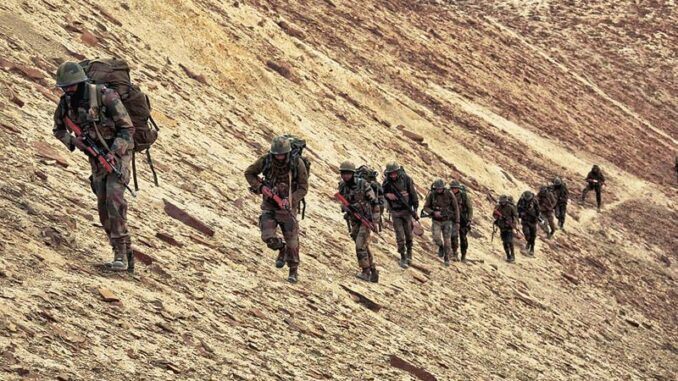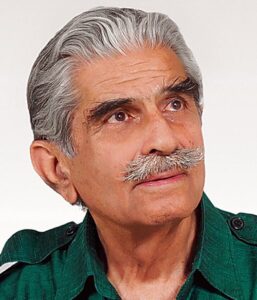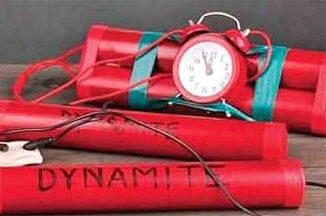
Since PLA’s multiple intrusions in May 2020, India chose diplomacy to achieve restoration of status quo ante in eastern Ladakh. Disengagement from all friction points except Depsang and Demchok has succeeded in creating buffer zones 2-10 km wide on the Indian side of the LAC.
“India’s suspicion of Joe Biden administration’s revival of ties with Pakistan is being attributed to the US maintaining strategic balance between India and Pakistan, especially after the cross-border operations in 2016 and 2019. India is only one of the 14 countries that has walked out of the Indo-Pacific Economic Framework for Prosperity (IPEF) ministerial meeting in the US, which has Washington worried.”

At London’s Frontline Club for journalists, American and British writers informed me that the US think tanks were concerned about India’s reliability as a partner to contain China. The worry, not new, was expressed on September 8, when perhaps unexpectedly, China agreed to disengage from another friction point — Patrolling Point (PP) 15 in the Gogra-Hot Springs area. The pullback resulted from the 16th round of Corps Commander-level talks (July 17), almost two months after what had appeared to be an inconclusive meeting at Moldo on the Chinese side of the border. Depsang, where the People’s Liberation Army (PLA) has intruded 18 km, and Demchok, where five patrolling points are blocked, remain unresolved.
Last week in Delhi, US Assistant Secretary of State Donald Lu, while calming fears on the $450-million F-16 fighter jet fleet sustainment programme, noted that the US was not seeing “any sincere effort by Beijing to resolve the dispute” and expressed skepticism about the disengagement agreement at PP-15. Lu said that the US would stand by India resolutely as it faces “terrible threat from China”.
India’s suspicion of Joe Biden administration’s revival of ties with Pakistan is being attributed to the US maintaining strategic balance between India and Pakistan, especially after the cross-border operations in 2016 and 2019. India is only one of the 14 countries that has walked out of the Indo-Pacific Economic Framework for Prosperity (IPEF) ministerial meeting in the US, which has Washington worried.
Meanwhile, former Australian Prime Minister Kevin Rudd, currently President and CEO of Asia Society, while launching his book Avoidable War: The Dangers of a Catastrophic Conflict between the US and Xi Jinping’s China in Mumbai and Delhi, said in response to a question that China would not withdraw from Ladakh and the border dispute would continue. Pessimism about the disengagement process and de-escalation is rife among India’s strategic community.
Combing through these events and statements (and ones earlier), it is clear that suspicion about mutual commitments by India and the US to their comprehensive strategic partnership have not gone away despite several positive indicators. The US has been extremely generous in granting or considering multiple waivers on Iran, Russia — arms and oil purchases from Moscow — and over Ukraine in order to promulgate its Indo-Pacific policy to counter China’s rise.
India’s foreign policy’s crown jewel remains strategic autonomy and multi-alignment. By being at odds with China, border dispute et al, India cannot realize its full potential of comprehensive national power and has to rely on the US hard and soft power to hedge China. Since PLA’s multiple intrusions in May 2020, India chose diplomacy to achieve restoration of status quo ante in eastern Ladakh. But disengagement from all friction points except Depsang and Demchok has succeeded in creating buffer zones 2-10 km wide on the Indian side of the LAC and prevented control of areas which it previously patrolled.
Diplomacy has been handicapped by self-goals: PM Modi’s statement that no Chinese intruded or is on Indian territory; in August 2020, the Ministry of Defense was forced to take down from its website details of intrusions contradicting the PM’s claim; withdrawal from Kailash heights for piecemeal disengagement surrendered a key advantage. Not only is the PLA ensconced on the Indian side of the LAC, it has also fortified battle positions and constructed military bases. A 5G network has come up along the LAC. Besides, five new heliports, a new bridge over Pangong Tso, five air bases with enhanced capacities and a new road G219 (in addition to the existing G619 from Kashgar to Lhasa) developed. Although not provoking China has been a feature of Indian diplomacy, pricks and jabs were par for the course. Conspicuously absent were statements on human rights violations in Xinjiang and Hong Kong. On Taiwan, India was on listening watch till the belated mild rebuke to desist from unilaterally altering status quo. The Dalai Lama spent a month in Ladakh and Modi wished him on his 86th birthday. Unsavory spats over Quad and Chinese spy ship Yuan Wang 5 in Hambantota and glacial pace of disengagement led External Affairs Minister S Jaishankar to reiterate India’s pet peeve about relations with China being in an extremely difficult phase and his rejection of the Chinese pleas about delinking bilateral relations from the border dispute. Complaints about China violating border protocols were bad for Beijing’s image.
Strategic autonomy was in full view with joint high-altitude training with US personnel in ‘Yudh Abhyas’ at Alaska in 2021 and this year close to the China border in Uttarakhand. Last month, Indian and Chinese troops participated in the Shanghai Cooperation Organisation (SCO) exercises along with Pakistani soldiers. US Chief of Naval Operations Adm Mike Gilday, after a visit to India last month, affirmed at the Heritage Foundation that the US considers India a strategic partner to counter China.
Jaishankar, responding to a question at Bangkok University on August 15, said, “The Asian century will happen when China and India come together, though at present relations are in a very difficult phase. It is in their interest to join hands.” Journalists at the Frontline Club were taken aback by India’s trapeze act. Jaishankar has maintained that India will always act in its self-interest.
Xi congratulated President Droupadi Murmu on her appointment, the first direct message by him since offer of Covid-19 assistance during the second wave in April 2021. Xi added that he attached great importance to China-India relations. His third term as President is virtually assured even before the once in five-year 20th Party Congress in October. Is Xi ready to make further concessions on the border, if disengagement from PP-15 days before the Samarkand SCO summit is any indication? Later this week, Modi and Xi, who met 18 times between 2014 and 2019, but have not spoken since the LAC row in April 2020, would be seeing each other several times at the summit. While India’s bottom line of status quo ante in eastern Ladakh is not realizable, Xi — during a pull-aside — can extend his hand, paving the way towards the making of the Asian century, eliciting a chuckle from the US.
(The author is a military commentator)





Be the first to comment